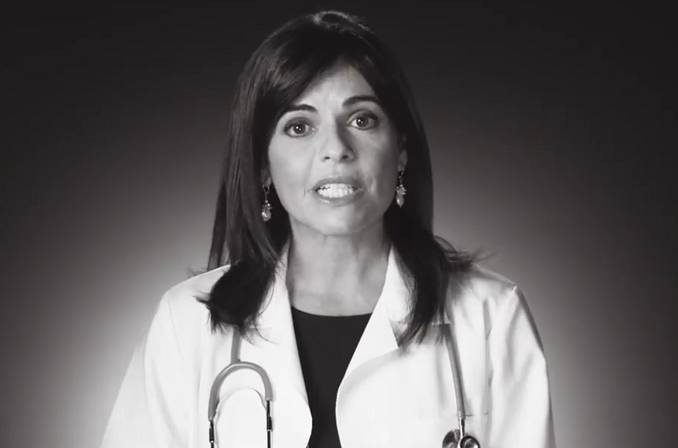Does Justice Sonia Sotomayor even read the briefs in cases before the Supreme Court?
I ask because the cases don’t come any bigger than Dobbs v. Jackson Women’s Health Organization, which addresses Mississippi’s limit on abortion after 15 weeks. The Court is being asked to overturn the 1973 decision in Roe v. Wade and 1992 decision in Planned Parenthood v. Casey. I joined two other female physicians (a neonatologist and an obstetrician) in an amicus brief detailing advances in fetal science that have happened since 1973.
During oral arguments, Justice Sotomayor displayed abysmal ignorance of the most basic scientific and medical facts about developing human life.
The exchange came right after Mississippi’s solicitor general Scott Stewart argued it was no longer appropriate to use fetal viability (the gestational age at which a prematurely-born infant can survive in an intensive care unit) as the point after which states can protect an unborn child from elective abortion. He said this was due—in part—to 30 years of medical advances. In a piqued, incredulous tone, Sotomayor demanded to know just “What are the advancements in medicine?” As Stewart began to list them, mentioning new knowledge of fetal pain, the Justice abruptly cut him off.
Our brief and others document the medical and scientific advances Mr. Stewart was referring to, in language easily accessible to lay people and rigorously sourced in the latest scientific journals and currently accepted medical practices. It’s there for anyone with eyes—or the will—to see.
Follow LifeNews on the MeWe social media network for the latest pro-life news free from Facebook’s censorship!
Sotomayor vigorously rejected Stewart’s reference to advances in our understanding of fetal pain. She claimed that only an eccentric “small fringe” believes fetal pain exists “before 24, 25 weeks.” She could not have been more wrong. A growing body of scientific evidence indicates that a fully developed cortex is not necessary for the transmission of pain sensations, which may be present as early as 12 weeks.
In fact, physicians routinely protect their youngest patients—fetal and premature—from pain. A baby born at 21 or 22 weeks receives anesthesia routinely during any intervention. Anything less would be considered barbaric. The same goes for fetal surgeries performed in the second trimester, in which the fetus is removed from the uterus, anesthetized and operated on, and then returned to finish growing inside her mother.
Whatever doubts existed in 1973 about the humanity of the fetus (and embryo) or its being “alive” from the moment of conception have been put to rest. The distinct DNA profile of an embryo and its self-directedness in the matter of development are clear biological markers for human life, and are recognized as such by biologists and physicians worldwide. A fetus is also fully human in the scientific sense that the human DNA that distinguishes us from all other living beings, and remains unchanged throughout our lives, is established at our conception.
Stewart also stated that now “we know [what] the child is doing and looks like.” I’m a radiologist; my patients include pregnant women and their children. In 1973, fetal ultrasound was in its infancy. Today, every American child is examined one or more times during their intra-uterine development. The resulting images show, in gorgeous detail, the unborn child’s endearing, indisputable humanity. Mouths that yawn, noses that itch and fingers that scratch in the dark silence of the uterus are no longer hidden from view. I create images that expectant parents treasure and preserve—images that make hearts throb with love and inspire a fierce desire to protect and preserve. Advances in my medical field have strengthened the unborn’s claim on American hearts and minds.
Justice Sotomayor paraded her scientific ignorance even further, callously comparing a fetus recoiling from pain to the muscle reflex of a brain-dead patient. “There’s about 40 percent of dead people who, if you touch their feet, the foot will recoil,” she said. In fact, brain-dead people do not “recoil” from painful stimuli as living people do. One of the ways we diagnose brain death is by documenting the loss of response to pain. You could amputate a brain-dead person’s limb with no response at all. Some extremely specific spinal reflexes persist in brain death while the patient remains on cardiac and respiratory support. But there is simply no “recoil” to touch in brain death.
The Court invites amicus briefs—and we submit them—so that parties with different competences can inform the Justices about developments in areas outside the purview of constitutional law. And that’s why it’s a shame that, in a landmark case involving whether human lives can be ended electively, a Supreme Court Justice would stick to outdated science and withered old misconceptions.
LifeNews Note: Pozo Christie specializes in radiology in the Miami area and serves on the advisory board for The Catholic Association.








